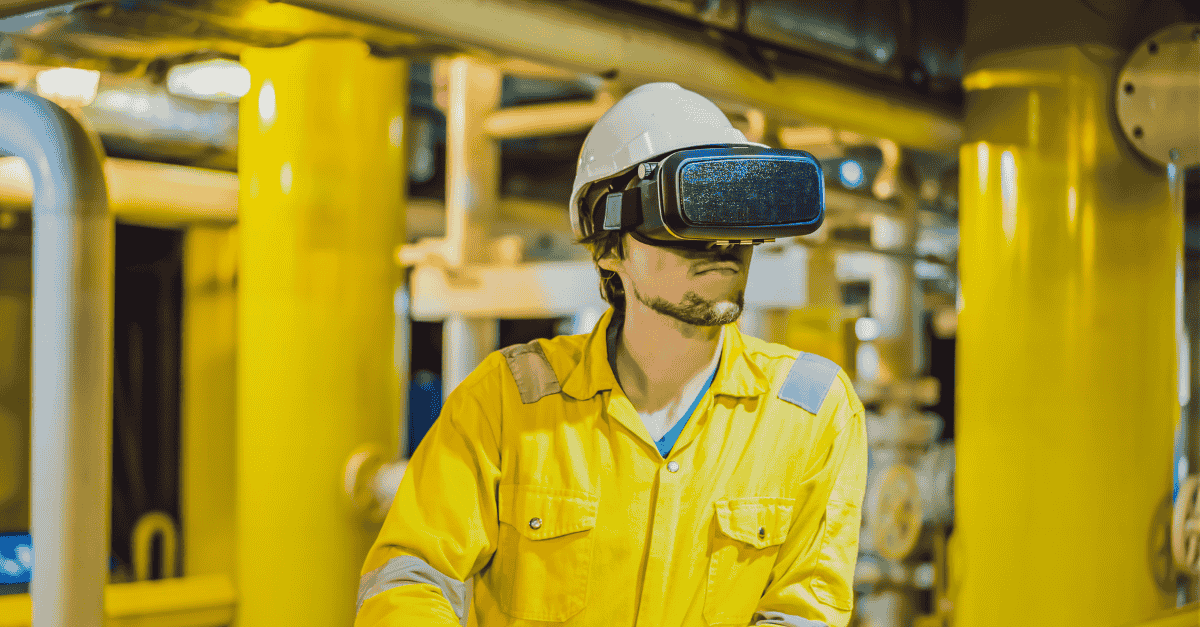How VR is revolutionising site turnarounds
Technology

Technology
Virtual reality (VR) is revolutionising the way the energy industry approaches site turnarounds. From training to project planning, by providing immersive, realistic 3D visualisations, VR helps teams and stakeholders make better, faster decisions. Read on to learn more about how VR and AR are making site turnarounds more efficient.
A site turnaround is a planned shutdown of operations at a facility, like a refinery, processing plant, or mine site, to carry out essential maintenance, inspections, and upgrades. These shutdowns are important for ensuring the facility operates safely, efficiently, and in compliance with regulations.
During a turnaround, teams inspect and repair equipment, replace worn-out components, clean machinery, and address any issues that could impact performance or safety. Since operations are completely halted, these turnarounds are meticulously planned to minimise downtime and control costs.
They often involve coordinating multiple teams, contractors, and suppliers within a strict timeline. While expensive and time-consuming, turnarounds are essential for avoiding unplanned outages and maintaining long-term productivity.
In industries like conventional energy and mining, it can be difficult to fully grasp the complexities of depth and lighting in a space without physically being there. VR changes this by creating accessible 3D environments that allow stakeholders to experience and evaluate these aspects firsthand. This improves decision-making when planning or assessing the feasibility of a project.
Experiencing a project in VR gives stakeholders a clearer understanding of its potential strengths and weaknesses. Whether it's assessing the layout of an oil rig, a mining operation, or equipment placement in a refinery, VR helps identify potential issues early on, enabling adjustments before actual construction begins. This proactive approach can save time and reduce expensive delays.
Automated modelling and analysis technologies in VR are transforming how companies in the oil, gas and mining sectors assess equipment and operations. For instance, advanced scientific image analysis can be used to visualise processes such as lubricant deposits on pistons. By offering 3D visualisations of this data, companies can make more informed decisions, optimise performance and reduce wear on machinery.

Training in industries like conventional energy and mining often involves complex, high-risk operations. VR offers a safe and effective way to train employees for potentially dangerous situations without putting them in harm's way:

Augmented reality (AR) is making its way into the oil, gas and mining industries, making fieldwork more efficient. For starters, it helps with remote assistance, allowing experts to guide workers in real time. They can share instructions, documents, and even draw on the screen to solve problems quickly.
AR also boosts operational efficiency by overlaying real-time data, like maintenance info and equipment status, directly onto a worker’s view. This makes tasks like maintenance, repairs, and troubleshooting smoother and cuts down on downtime.
Plus, it’s a great training tool, helping technicians with complex procedures and offering extra visual details to make sure everything’s done accurately and safely.
Another use case for VR should be mentioned: virtual onboarding. Virtual onboarding is an efficient way to integrate new employees into the workforce. Through video calls, webinars, and online courses, workers can quickly familiarise themselves with company policies, safety protocols, and job-specific training, all from a remote location. This is particularly useful in large-scale operations where staff are spread across multiple locations.
VR is reshaping the way the Conventional Energy and Mining industries approach project planning, training, and operations. By providing immersive, interactive solutions, VR helps stakeholders visualise projects, optimise turnarounds, improve safety, and reduce costs. As the technology advances, VR will continue to play an essential role in transforming the way these industries operate, offering even greater opportunities for efficiency and risk mitigation.
Brunel can help source the people and skills across industries including conventional energy, mining, renewable energy, infrastructure, life sciences and information technology.
When you partner with Brunel, you benefit from local knowledge, global strength and a commitment to the highest level of quality and customer satisfaction. We look forward to demonstrating this to you.